Rules for planting peanuts on the site and at home
Peanuts are a tasty and healthy delicacy containing a whole range of elements necessary for the body: proteins, fats, carbohydrates, vitamins, minerals, amino acids, antioxidants. Adults and children love him, he is also popular with summer residents: planting peanuts in the plots for many of them has already become a habitual occupation. Believe it or not, nutritious nuts can be obtained at home if the potted plant is properly cared for.
Features of culture and the choice of a place for it
Peanuts originate from the countries of the South American continent - Argentina and Bolivia. It was from there that culture spread throughout the world, successively conquering India, Japan, the Philippine Islands, Madagascar, China, Turkey, Africa, Spain, France, and the United States. It has been known in Russia since the 18th century. Peanuts are thermophilic and demanding in terms of climatic conditions, but it is still possible to grow it in open ground. On the Eurasian mainland, it is successfully bred in limited areas: in the southern regions of Ukraine, in the North Caucasus, in the Transcaucasus, and in central Russia.
To plant peanuts in the garden, you need to choose a bright area, which in the spring is quickly freed from snow and dries up, and in summer it warms up well with the sun's rays. It develops best on the hills. Even the slightest shading is bad for the plant, leading to a significant decrease in yield. Cold winds are also destructive for him, so the site must be protected from them.
The peculiarity of peanuts is that their fruits develop in the ground, and the ovaries sink into it after pollination. Therefore, the quality and structure of the soil are of key importance for the plant. This southerner needs a neutral soil. If the soil on the site is characterized by high acidity, it will have to be prepared for planting peanuts by adding the following components:
- limestone (ordinary or dolomitized);
- a piece of chalk;
- limestone tuff;
- lake lime (drywall).
Groundnut prefers earths rich in calcium and magnesium. It develops best of all on light, maximally loose, well-permeable soils with a significant admixture of sand. If the soil on the site is dense and moisture stagnates in it, this will complicate the cultivation of the crop. Providing good drainage can help cope with unfavorable conditions for peanuts. Soils with a high salt content are not suitable for peanuts. It is reduced by the introduction of special compounds (phosphogypsum, stucco), after which the earth must be enriched with organic fertilizers.
Landing scheme
In open ground, peanuts are planted in late spring, usually in the middle or second half of May. Frosts are detrimental to the culture, so you need to wait until those days when their likelihood becomes minimal. The seeds of the plant are placed in well-heated soil. Its temperature should be at least 12-15 ° C. The growing season for a peanut is long, therefore, in regions with a temperate climate, its fruits have time to ripen if it is bred in seedlings. Growing peanuts on site will be more successful when using seeds from regionalized crop varieties.
Advice
You can also plant this nut in beans. Experienced gardeners recommend this way of breeding it. The beans contain a lot of nutrients that contribute to the full development of seedlings, so the seedlings will hatch through the soil faster and will be stronger and healthier than when planting peanut seeds.
Seeds are sown into pre-prepared holes, placing 3-5 seeds in each. Caring for peanuts is close to potato farming and involves periodic hilling of plantings. So that its cultivation does not bring hassle, the beds should be made wide - at least 45 cm, and leave at least 0.5 m of free space between the rows. It is from there that the earth will be taken for hilling. The holes are made every 25-30 cm. The peanuts are planted at an average depth, the soil layer above the seeds should be 5 cm.
You can sow groundnuts in another way. 2 deep (10 cm) furrows are drawn along the sides of the bed. Seeds are placed in them at a distance of 8-10 cm from each other. To make care for peanuts easier, and the plants themselves develop well, the interval between adjacent bushes should be 15 cm. If seedlings are more frequent, they are thinned out. But this is not always the case. Some of the seeds do not germinate, some are damaged by insects. Therefore, it is better to play it safe and sow them more often. When all the seeds have been spread, the furrows are covered with soil, leveling the surface of the bed. It is more efficient to use a rake for this, turning it over with its reverse side.
Planting a peanut in open ground is completed with abundant watering. It is carried out with a watering can or from a hose, putting on a special nozzle so as not to wash out the soil. Water the plantings slowly and with a weak pressure of water, carefully moistening the entire surface of the garden. It is better to walk on it 2-3 times in order to saturate the soil with water as much as possible. The signal for the end of watering will be the appearance of puddles on the garden bed. If lime or gypsum was added to the soil, after a couple of hours its surface may crack. This is a natural consequence of the procedures carried out; it will be eliminated by itself after several planned irrigations.
The specifics of the seedling method
Many gardeners prefer to cultivate a crop through seedlings. The main advantage of this method over sowing peanut seeds directly in the open field is the ability to get more yield. To keep the seedlings strong and healthy, it is important to use quality planting material. It is better to sow it in peat pots. If they are not available, plastic or cardboard cups and any other shallow containers will do. The procedure is carried out in April.
Containers for future seedlings are filled with a loose and nutritious substrate. It is not difficult to prepare it at home, it is enough to thoroughly mix the soil from the site with humus and sand, taken in equal amounts. Before planting, the seeds are placed in a solution of potassium permanganate. This will reduce the risk of disease affecting delicate seedlings.
Having spread the seeds into pits 3-4 cm deep, they are covered with soil. To make them germinate faster, the containers are covered with film or glass, after which they are placed in a warm, bright place where direct sunlight does not fall on them. Caring for peanut seedlings at home has no distinctive features in comparison with other vegetable crops. It will be possible to transplant plants to a permanent place in the garden in May, when the soil warms up enough, and the first frosts will definitely be left behind. Usually this time comes 2 weeks after germination.
Indoor cultivation of peanuts
Peanuts are an amazing crop that can produce crops even in a pot. It will not be as abundant as when grown in the open field, but how much pleasure the very fact of getting it at home will bring. Seeds or beans are planted in volumetric pots in the spring, observing the culture requirements for the composition and structure of the soil. When using the whole fruit, it is recommended to squeeze it slightly with your hands so that the shell cracks slightly.
A drainage layer must be placed on the bottom of the pot. Plant the peanuts to a depth of 2 cm by placing the seeds or beans in the center of the container. Thoroughly watering the soil in a pot, it is covered with a film, in which several holes are made so that the plantings can breathe.You can use a cellophane bag. For seeds to germinate quickly at home, it is important that the room temperature does not drop below 20 ° C.
The soil in the pot should not dry out, but the planting will not tolerate excess moisture either. The nut grown indoors is watered infrequently, about once every 2 weeks. Caring for him involves regular spraying. The emergence of seedlings can be expected after 2-3 weeks. Outwardly, they look like clover. When the sprouts get a little stronger, they are thinned out, leaving 3-4 of the strongest specimens.
Agricultural rules
This nut feels most comfortable in warm weather, when the air warms up to 20 ° C and above. A temperature in the range of 15-19 ° C does not affect the development of the bushes, but a lower one stops their growth. Therefore, growing peanuts will require constant attention to the weather forecast. On cooler days, he will need protection. The beds are covered with foil or special material.
Planting care is simple. It consists of 5 procedures:
- regular hilling;
- timely removal of weeds;
- loosening;
- dressing;
- glaze.
During the growing season, peanuts are spud 4-5 times. The frequency and correctness of the procedure depends on how much harvest the bushes will bring. The plant will tell you the time for the first hilling: its fruitful shoots will sink to the soil. This usually happens 10 days after flowering is complete. Planting should be spudded as high as possible. This will make it easier for the ovaries to penetrate the soil, and there will be more layers of peanuts with nuts. It is better to carry out the procedure after intensive watering.
During the period of budding and flowering, the bushes need a lot of moisture. But here it is important not to overdo it, since waterlogging of the soil is fraught with rotting of the roots of peanuts. At this time, the plantings are watered a maximum of twice a week with warm water. They will also need to be fertilized with complex mineral preparations with a high content of phosphorus and potassium. Top dressing is carried out three times per season. When the peanut is blooming, the frequency of watering is determined by the weather conditions. If the summer is rainy, it will have enough natural moisture. On dry hot days, planting will still need watering, but rare and abundant.
Advice
So that the peanuts ripen faster, soil moisture is minimized in September, and it is completely stopped 2 weeks before harvesting.
Until the nut has closed its leaves, you need to carefully monitor the cleanliness of the beds. Weeds clog young plants, so they are removed regularly. Under mature, well-developed bushes, excess grass simply does not grow.
Farming peanuts on site is a great way to treat yourself and your loved ones with delicious and nutritious nuts. Its cultivation cannot be called labor-intensive and troublesome, the agricultural technology of culture is quite simple, although it will require some knowledge. Planting in competently prepared soil, hilling, watering and fertilizing - compliance with these rules will allow you to get a valuable crop and fully enjoy the surprise and delight of those for whom peanuts are still an exotic guest on store shelves.
Difficulty in breeding a peanut can only be its exclusive dependence on heat. With its lack, the bush will simply stop growing, and you will have to forget about the harvest. Therefore, it can be grown not everywhere, but only in those areas where watermelons and melons have time to ripen over the summer. But here, too, you will need to carefully monitor the thermometer and be constantly ready to protect the plantings from the cold.
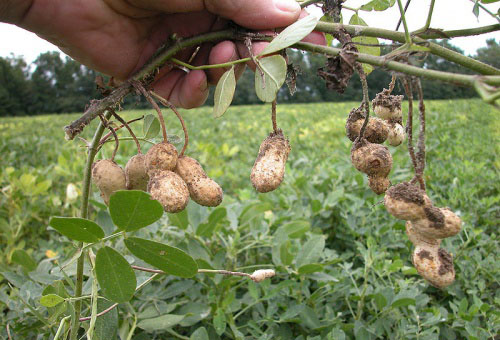
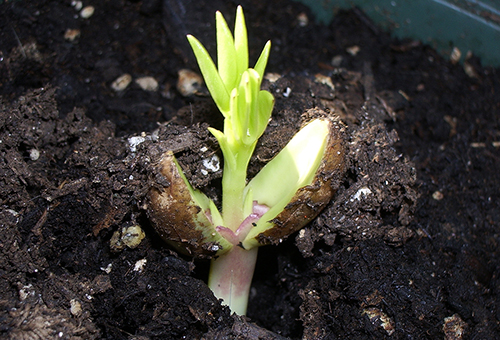
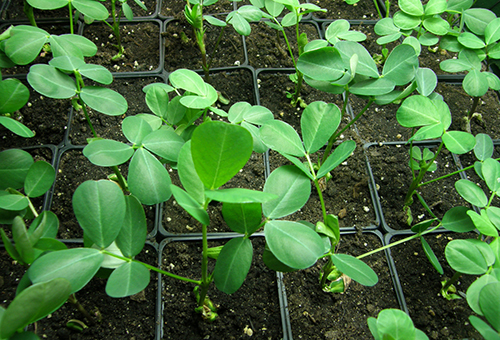
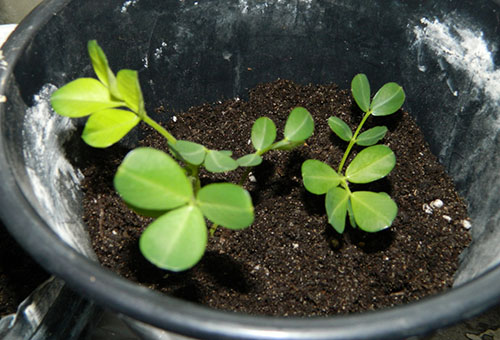
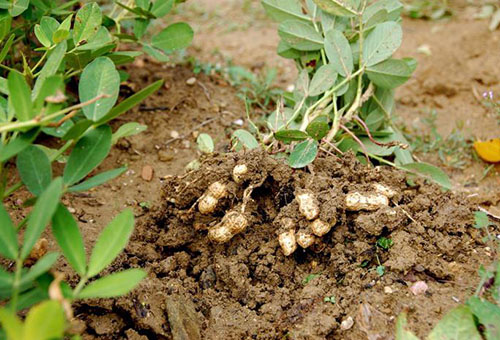
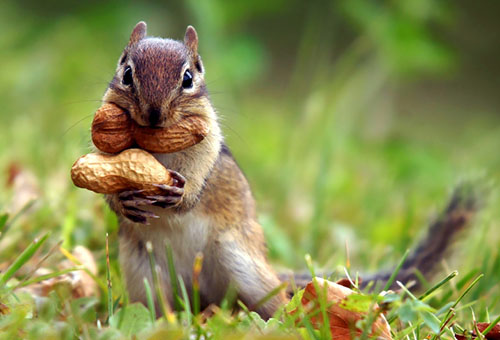
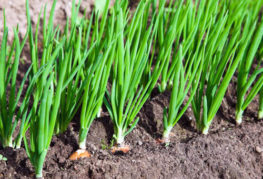
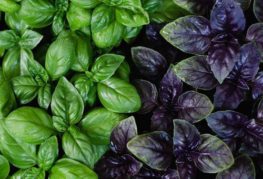
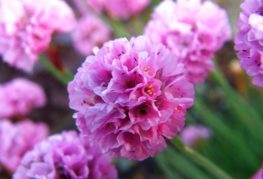
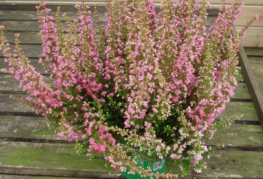
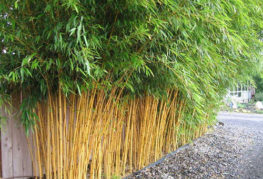
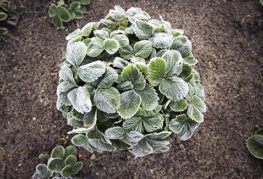
and will be published shortly.